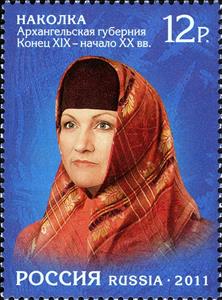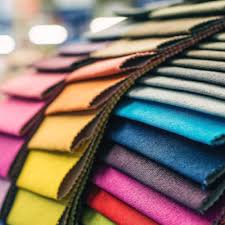Stamp: Headdresses of Russian North. Maiden Fillet (XIX-XX c.) (Russia 2011)
Headdresses of Russian North. Maiden Fillet (XIX-XX c.) (Russia 2011)
15 September (Russia ) within release Headdresses of Russian North. goes into circulation Stamp Headdresses of Russian North. Maiden Fillet (XIX-XX c.) face value 12 Russian ruble
| Stamp Headdresses of Russian North. Maiden Fillet (XIX-XX c.) in catalogues | |
|---|---|
| Michel: | Mi:RU 1754 |
Stamp is vertical format.
Also in the issue Headdresses of Russian North.:
- Stamp - Headdresses of Russian North. Winter Hat (XIX c.) face value 12;
- Mini Sheet - Headdresses of Russian North. Winter Hat (XIX c.) face value 132;
- Mini Sheet - Headdresses of Russian North face value 96;
- Stamp - Headdresses of Russian North. Wiglet (XIX c.) face value 12;
- Mini Sheet - Headdresses of Russian North. Wiglet (XIX c.) face value 132;
- Stamp - Headdresses of Russian North. Povoi (XIX c.) face value 12;
- Mini Sheet - Headdresses of Russian North. Povoi (XIX c.) face value 132;
- Stamp - Headdresses of Russian North. Maiden Fillet (XIX-XX c.) face value 12;
- Mini Sheet - Headdresses of Russian North. Maiden Fillet (XIX-XX c.) face value 132;
Stamp Headdresses of Russian North. Maiden Fillet (XIX-XX c.) it reflects the thematic directions:
A culture is a way of life of a group of people--the behaviors, beliefs, values, and symbols that they accept, generally without thinking about them, and that are passed along by communication and imitation from one generation to the next. Culture is symbolic communication. --the behaviors, beliefs, values, and symbols that they accept, generally without thinking about them, and that are passed along by communication and imitation from one generation to the next. Culture is symbolic communication.
Fashion is a term used interchangeably to describe the creation of clothing, footwear, accessories, cosmetics, and jewellery of different cultural aesthetics and their mix and match into outfits that depict distinctive ways of dressing (styles and trends) as signifiers of social status, self-expression, and group belonging. As a multifaceted term, fashion describes an industry, styles, aesthetics, and trends.
Textile is an umbrella term that includes various fiber-based materials, including fibers, yarns, filaments, threads, and different types of fabric. At first, the word "textiles" only referred to woven fabrics.However, weaving is not the only manufacturing method, and many other methods were later developed to form textile structures based on their intended use. Knitting and non-woven are other popular types of fabric manufacturing. In the contemporary world, textiles satisfy the material needs for versatile applications, from simple daily clothing to bulletproof jackets, spacesuits, and doctor's gowns
Headgear may be worn for protection against cold (such as the Canadian tuque), heat, rain and other precipitation, glare, sunburn, sunstroke, dust, contaminants, etc. Helmets are worn for protection in battle or against impact, for instance when riding bicycles or motor vehicles. There are also hats that are worn for protection from the cold




